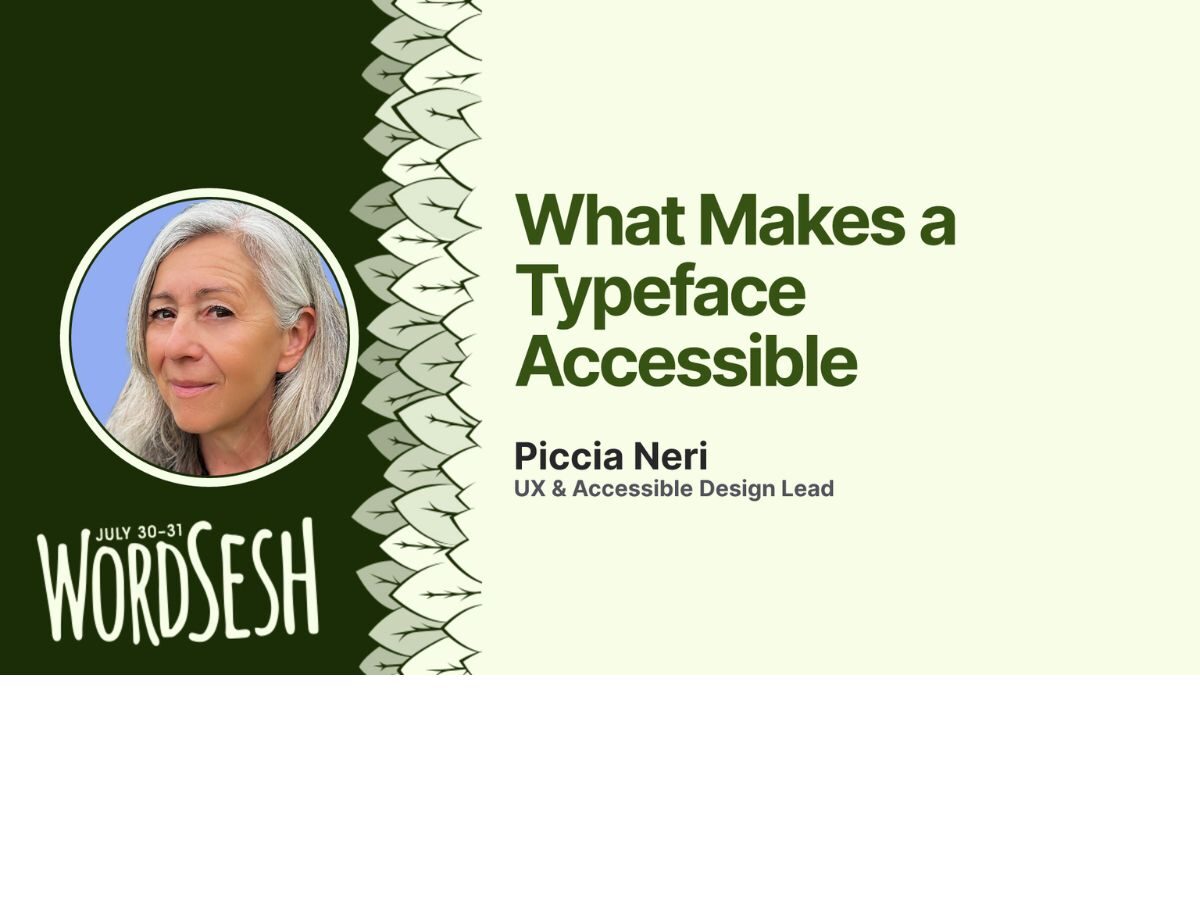
What Makes a Typeface Accessible
Learn the critical role typography plays in making digital content accessible and inclusive.
Most of the internet is written language, which means text is vital for both user experience and web accessibility. In this session, we’ll unpack common accessibility issues, like poor contrast and improper HTML structure, and how typography extends beyond the basics of visible text.
Good typography enhances legibility for everyone, particularly those with low vision or reading difficulties. Semantic HTML is crucial for visitors who rely on assistive technology.
Help us build a more inclusive web! Get Piccia’s accessible typeface checklist, learn from practical tips and examples, and understand why typefaces meet (or miss) accessibility standards.
What You’ll Learn
- Importance of typography in user experience and accessibility
- How typography impacts web accessibility for both visual and non-visual users
- The significance of proper HTML structure for screen readers
- Eight key requirements for choosing accessible typefaces
- Practical examples of good and bad typography in real websites
- The impact of font readability, contrast, spacing, and structure on accessibility
- Why avoiding certain typefaces and font styles improves accessibility
- Resources for further learning on accessible typography